Are you a Quiet Speculation member?
If not, now is a perfect time to join up! Our powerful tools, breaking-news analysis, and exclusive Discord channel will make sure you stay up to date and ahead of the curve.
Discussing the Modern banlist has always been a favorite pastime of the format's aficionados. In times like these (and I don't mean COVID-19, but that other c-word), player attention is turned towards what needs to be banned; pundits have suggested all the companions eat the bullet, or that Wizards implement sweeping errata. But personally, I've grown a bit tired of every article (here and elsewhere) being a Lurrus Luncheon. So today, we'll look at some of the interesting cards Modern still has locked away and consider the implications of releasing them into the format.
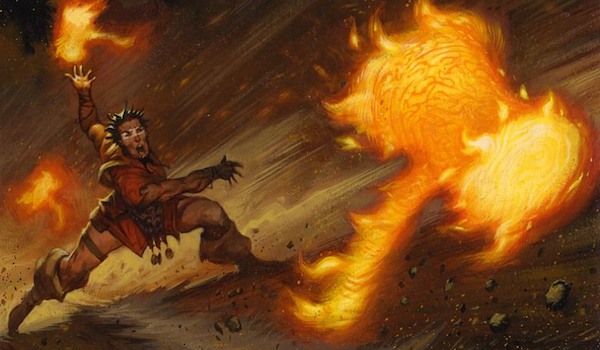
For what felt like an eternity, a few select cards were mentioned again and again when it came to unbanning chatter. Those cards, Bloodbraid Elf, Jace, the Mind Sculptor, and Stoneforge Mystic, have all been made available to Modern, and the format handles them just fine. The remaining cards might be less obvious, but I wonder if they don't also deserve a spot in the conversation.
Bridge from Below
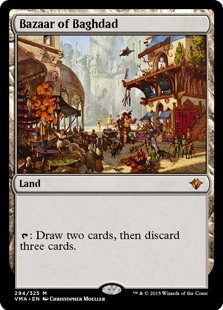 The older the format, the more broken Bridge from Below seems to become. Moden has been unseated as the freshest non-rotating format by now, but I still think its graveyard enablers and payoffs are sparse enough to warrant a return for this enchantment.
The older the format, the more broken Bridge from Below seems to become. Moden has been unseated as the freshest non-rotating format by now, but I still think its graveyard enablers and payoffs are sparse enough to warrant a return for this enchantment.
Why It Was Banned
Bridge was banned to combat Hogaak, Arisen Necropolis. At the time, Hogaak Bridgevine boasted a commanding 60% Game-1 win-rate and had grown to utterly dominate competitive Modern. Of course, post-ban, Hogaak itself continued on its tear and was banned a month later.
Hogaak Dredge, pepeisra (2nd, MTGO Modern MCQ)
 With Hogaak gone, though, Bridge remained on the banlist, even though it was banned to weaken the now-demolished Hogaak deck. Some justification from Wizards does hold up: Bridge was selected over other options because of its standing as the card "most likely to cause metagame imbalance again in the future." However, as a believer in cards being freed if their current threat potential is low, I'd rather see a guilty-until-proven-innocent approach employed. After all, we don't see Wizards banning cards because they might one day ruin the format. Take their justification for not touching Ancient Stirrings or Mox Opal back in January 2019:
With Hogaak gone, though, Bridge remained on the banlist, even though it was banned to weaken the now-demolished Hogaak deck. Some justification from Wizards does hold up: Bridge was selected over other options because of its standing as the card "most likely to cause metagame imbalance again in the future." However, as a believer in cards being freed if their current threat potential is low, I'd rather see a guilty-until-proven-innocent approach employed. After all, we don't see Wizards banning cards because they might one day ruin the format. Take their justification for not touching Ancient Stirrings or Mox Opal back in January 2019:
Bear in mind that this is based on the current state of the metagame, and that Ancient Stirrings and Mox Opal are not being given a free pass in perpetuity. While we have no current plans to take action against these two cards, we'll continue to monitor the health of the environment and the strength of decks that use them. If the metagame reaches a point where we determine these cards are doing more to suppress archetype diversity than enable it, we will certainly revisit this discussion.
What It Would Do Now
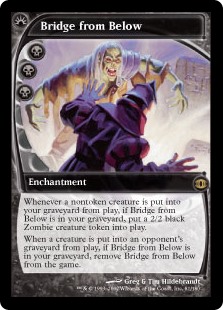 I do think Bridge would see play if unbanned, specifically in Dredge. But I also don't think Dredge would suddenly become broken. The deck was fine pre-Hogaak, and would certainly be fine now; the deck has all but vanished from the current metagame anyway, even with supposed upgrade Ox of Agonas in the mix.
I do think Bridge would see play if unbanned, specifically in Dredge. But I also don't think Dredge would suddenly become broken. The deck was fine pre-Hogaak, and would certainly be fine now; the deck has all but vanished from the current metagame anyway, even with supposed upgrade Ox of Agonas in the mix.
Potential Risks
It seems to me that graveyard cards need to be pretty busted to actually make Bridge from Below good. Wizards isn't exactly in the habit of printing Bazaar of Baghdad-level cards anymore, which is why the enchantment spent much of Modern's lifespan on the sidelines. I think unbanning Bridge is significantly low-risk, and if another superb enabler is printed that appears to break it, that card may warrant a closer look.
Punishing Fire
In conjunction with Grove of the Burnwillows, Punishing Fire essentially gives players the ability to pay 2R each turn to point 2 damage at something. The combination remains potent in Legacy decks light on battlefield interaction, such as Lands.
Why It Was Banned
This pair of cards is commonly used, and is devastating to creature decks relying on creatures with less than 2 toughness. It also is a very slow and reliable win condition, netting 1 life for 3 mana. Tribal decks relying on 2 toughness "lords" see very little play, and this is a major barrier to their success.
Wizards wanted more Lord decks, or really, more aggro decks of any variety besides Zoo. What they got was a format whose aggro niche was mostly occupied by Affinity, a deck that stayed a powerful aggro option in Modern until the months leading up to a Mox Opal ban.
Punishing Zoo, Jamie Hannah (2nd, Worlds)
As part of the campaign to diversify aggro, Fire was banned alongside Wild Nacatl, which has since been unbanned.
What It Would Do Now
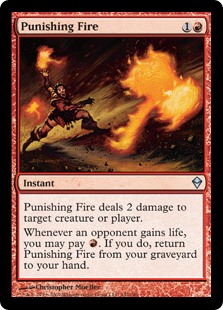 Fire was axed to lend a helping hand to tribal aggro decks featuring stat-buffing lords. In today's Modern world, Humans is the closest analogue, but that deck's main purpose is not to increase board presence using lords; it's to disrupt opponents with powerful enters and static effects.
Fire was axed to lend a helping hand to tribal aggro decks featuring stat-buffing lords. In today's Modern world, Humans is the closest analogue, but that deck's main purpose is not to increase board presence using lords; it's to disrupt opponents with powerful enters and static effects.
Tearing Fire away with Kitesail Freebooter, or crippling the engine with taxing effects the likes of Thalia, Guardian of Thraben or Unsettled Mariner, are some of the options the deck has already built-in to its mainboard to weather that kind of attack from opponents. Those cards have long been integral to stopping more streamlined versions of such an attack from Push, Bolt, and other efficient removal spells, and are what competitively sets Humans apart from other Modern fish decks.
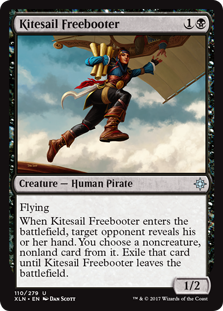 Most other decks with x/1s and x/2s are fast enough to overwhelm the engine, but I can see Fire becoming something of a common tech for midrange mirrors; it keeps Bloodbraid Elf, Dark Confidant, and Lurrus off the table, I supposed. Even then, I expect its applications to prove slim, or far from polarizing.
Most other decks with x/1s and x/2s are fast enough to overwhelm the engine, but I can see Fire becoming something of a common tech for midrange mirrors; it keeps Bloodbraid Elf, Dark Confidant, and Lurrus off the table, I supposed. Even then, I expect its applications to prove slim, or far from polarizing.
Krark-Clan Ironworks
Next up is an artifact that slumbered in Modern's annals for most of the format's history, only to be broken wide-open late 2018.
Why It Was Banned
Ironworks was banned for a few reasons, chief among them placing in too many GP Top 8s.
Krark-Clan Ironworks decks have risen to prominence at the Grand Prix level of play, posting more individual-play Modern Grand Prix Top 8 finishes than any other archetype, despite being only a modest portion of the field. [...] With no signs of the Ironworks deck's dominance at the GP level slowing down, we've decided to take action by banning the card Krark-Clan Ironworks.
Wizards believed the deck's standing as Modern's top deck would only solidify as more players learned the strategy's ins-and-outs, concluding that "Ironworks [posed] a long-term threat to the health of competitive Modern play."
Ironworks Combo, Abe Corrigan (1st, SCG Team Open Columbus)
 Critically, other cards Wizards considered for the ban were Ancient Stirrings and Mox Opal, the latter of which was the most important to Ironworks Combo---it accelerated the deck by an extra turn, giving it the speed needed to compete in Modern.
Critically, other cards Wizards considered for the ban were Ancient Stirrings and Mox Opal, the latter of which was the most important to Ironworks Combo---it accelerated the deck by an extra turn, giving it the speed needed to compete in Modern.
While Stirrings still exists and could help players string together a gameplan, Opal is gone, making the deck significantly less threatening. Unlike with Bridge from Below, the question of whether banning Opal would render Ironworks manageable was never really asked by Wizards. Rather, they elected to axe Ironworks for fear of badly damaging other strategies.
What It Would Do Now
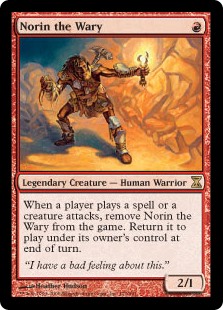 Ironworks would again spearhead its own deck, but that deck would prove extremely fringe; to give a reference point, I think it would wind up in the competitive bracket occupied by Norin Soul Sisters, Doran Rock, and other outdated Modern decks from the format's earlier years. That's just what Ironworks is now, an outdated deck---without Opal giving it the speed it got by on, the strat would be DOA in Modern.
Ironworks would again spearhead its own deck, but that deck would prove extremely fringe; to give a reference point, I think it would wind up in the competitive bracket occupied by Norin Soul Sisters, Doran Rock, and other outdated Modern decks from the format's earlier years. That's just what Ironworks is now, an outdated deck---without Opal giving it the speed it got by on, the strat would be DOA in Modern.
I will concede that David's take on the deck while it was legal was quite different from mine. In his view, that extra turn of speed was not what made Ironworks so potent; that honor went to Engineered Explosives. He went on to argue that banning Opal would not do much to stop the Ironworks deck.
Potential Risks
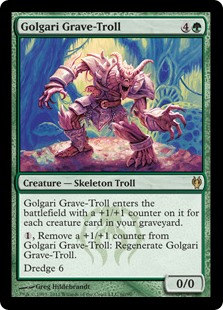 Which brings us to the risk: what if Ironworks did prove problematic? That's the worst-case scenario, but my solution here is simple: just re-ban it.
Which brings us to the risk: what if Ironworks did prove problematic? That's the worst-case scenario, but my solution here is simple: just re-ban it.
Re-ban it?! You mean create another Golgari Grave-Troll fiasco? Yes, that's exactly what I mean! Modern may be non-rotating, but it's far from unchanging, as the last two years have beaten us over the head with. Reintroducing Ironworks and then removing it doesn't sound bad to me at all. I appreciate when Wizards gets hands-on with Modern and displays an appetite for experimentation.
And the ensuing "fallout" wouldn't be unprecedented by any means---in my eyes, the situation is quite similar to Once Upon a Time's, or Oko's, or soon, Lurrus's (let's just be real Dej Loaf voice). In other words, we get that "fiasco" all the time, but Modern remains a player favorite.
A Conclusion... For Now
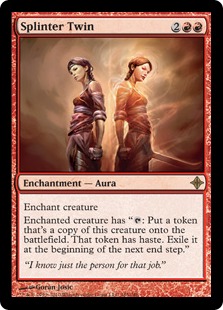 There are other cards on the banlist I think could maybe come back to Modern, or are worth thinking about returning even as a thought experiment. And yes, those cards include Splinter Twin!
There are other cards on the banlist I think could maybe come back to Modern, or are worth thinking about returning even as a thought experiment. And yes, those cards include Splinter Twin!
Which cards do you think are safe? Or is it even responsible to entertain such a pursuit with Lurrus tearing up the metagame? As always, and perhaps more than ever in this era of isolation, I'd love to hear your thoughts in the comments!




